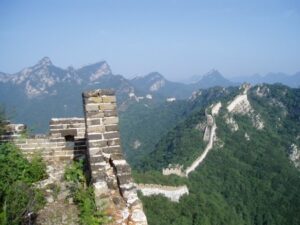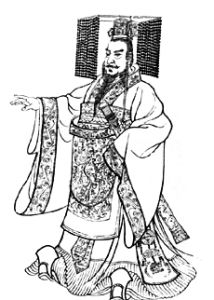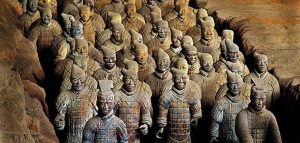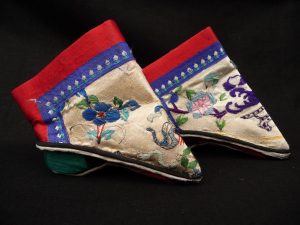China (unit 5)
Intro and Themes
CHW3M_China_Intro – Stability PPT
Task: identify themes in Chinese history throughout the slides.
- stability
- isolation
- innovation
- centralization
- patriarchy
- education
- multiple belief systems
Task: Read pages 333-335 and take notes on:
- Lack of unity in E. Zhou dynasty
- Competition leading to military and agricultural improvements
- Confucius: ren, learning and practice (filial piety, rectification of names, courtesy)
- Taoism
Confucianism, Taoism, Legalism
Taoism and confucianism (PPT)
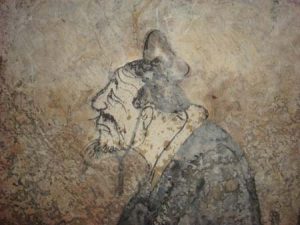
(071016) — JINAN, Oct. 16, 2007 (Xinhua) — Photo taken on Oct. 13, 2007 shows a fresco depicting ancient Chinese philosopher and educator Confucius (551 B.C.-479 B.C.), found in a tomb in an old residential yard in Dongping County, east China’s Shandong Province. The fresco, discovered in a tomb dating back to about 2,000 years ago, is well preserved with images of drinking, dancing, cock fighting, women servants and historical stories in legible colors, heritage workers said. (Xinhua) (clq)/(zlq)
- Identify what is at the centre of the Taoism and Confucianism circles on your handout page:
- one is nature, one is stability. Which is for Confucianism?
2. Practice differentiating between Taoism and Confucianism using the mixed quotes below.
Mixed Confucian and Taoist Quotes
3. Which aspects of Taoism or Confucianism could be useful in today’s society?
- no one seemed to think much of this connection this year
4. Another way, that rejected both Confucianism and Taoism, was legalism. The First Emperor was highly influenced by Legalistic thought that emphasized strict laws and harsh punishments to achieve order/obedience/stability.
Task: Take notes on first emperor from pages 337 – 341 – use a T chart to record good actions and bad actions.
To learn more about Confucianism and Taoism:
- Watch excerpts from Bettany Hughes – Genius of the Ancient World – Confucius
- Confucianism_Documentary_Notes
- Confucianism (Asia Society)
- Why is Confucius Still Relevant Today (National Geographic)
- Warring States Period (Khan Academy article)
- Watch Taoism: Opening Dao (23 mins)
- Daoism (Asia Society, reading)
- Daoism and Daoist Art Essay (Metropolitan Museum of Art)
CHW 3M Taoist Quotes from Lao Tzu
The First Emperor
Take your good and bad actions of the First Emperor. Put them on a timeline with attitude.
Themes for Progress:
- centralization
- standardization
- unification
Themes for Decline:
- control
- oppression
- assimilation?
The Terracotta Warriors – National Geographic (YouTube, 4:10)
From Qin to Han/Tang/Song Dynasties – how much continuity was there?
Did elements of the Qin dynasty continue into the future?
What were the unique features of these three dynasties?
Task:
- annotate each dynasty page with ways it was similar to or different from Qin.
CHW3M Chinese Dynasties after the Qin Empire (notes from textbook on Han, Tang, Song)
2. transfer the analysis onto the Han/Tang/Song continuity chart.
3. Answer one of the questions at the bottom of the chart:
Re-name the dynasty (if you had to sum up the dynasty in five words or less or a short motto):
Han: new policies which modernized China; continued policies, changed mindset; unification through new government institutions.
Tang: commoners and women unite; new rights for the oppressed; progress and didn’t do much?.
Song: open for business, development smoothie?; progressed China economically and culturally; very progressive, shut down traditions.
Excerpts from Emperor Taizong on Effective Government
What connections can you find between today’s PSD and Confucianism, Taoism, First Emperor, stability, dynastic cycle.
Empress Wu: Empress_Wu_biography
China Comparison Assignment
See side tip page.
Foreign Relations and China after the First Emperor
Timeline of Dynasties: SZQHTS – Some zombie quaestors had to sleep.
Dynastic Cycle = Mandate of Heaven (mandate = the perceived right to do something, this case, rule)
Advantages and Disadvantages of Foreign Contact (generally, when one culture comes into contact with another culture)
Advantages
- trade
- diversity (new people)
- expansion of territory
- new technology
- new ideas
Disadvantages
- conflict
- invasions
- loss of resources
- cultural influences
- economic domination
CHW3M_China_Foreign_Contact_Adv_Disadv
The Mongols
Note who benefited from (or was unaffected by) Mongol rule (the Yuan Dynasty), and who suffered. Note that there were unintended consequences of Mongol rule of China (textbook pages 354-355).
Know your order of dynasties – see timeline in your handouts (sideways facing page on the back of Taoism/Confucianism circles page)
Ming Dynasty – Attitude Toward Foreign Contact
Chinese rebelled against the Mongols and installed their own dynasty. How would they feel about foreign contact after 200 years of Mongol rule?
What was China like under the Ming?
China was exporting a lot via land and sea (silk and porcelain being the two biggest trade items at this time).
It was mostly a time of political stability with powerful emperors advised by those who had risen through the ranks of the examination system (based on knowledge of the Confucian classics). Wealthy local families (the gentry) tried to help the ordinary people.
It was a time of artistic flourishing echoing back to the Song dynasty. Probably most well known was the calibre of porcelain at this time – durable and fine.
For a time it sent out huge sea-based expeditions under Admiral Zheng He.
Overall, China was very wealthy and dominant in the world. After two centuries of foreign rule, they had come to believe that only “change within tradition” was good. Would this stop them from advancing?
Video:
Zheng He’s voyages from Engineering an Empire.
Ancient Chinese Explorers (Nova)
The Mandate of Heaven. This was a very old concept that pre-dated the Ming Dynasty. See the Dynastic Cycle in your handouts on the back of the Taoism/Confucianism circles page. The cycle starts and ends with the new or old emperor either receiving or losing the Mandate of Heaven.
The Ming dynasty’s worldview. Look at your diagram of concentric circles with China at the centre. Those that were closest to the centre had the most similar way of life, such as Korea and Vietnam because they had been influenced by Confucianism. Those farther out on the circles were dissimilar in way of life, such as Mongols (who had invaded China earlier) and Europeans.
The Chinese worldview can be related to their feeling of superiority: Chinese_Superiority_Quotes
Please note how the quotes relate to the Mandate of Heaven.
When Europeans started coming to China they were seen in two lights:
- ordinary traders who found that China didn’t want to trade with them, and therefore started to steal/pirate – they were seen as “ocean devils” – on the outside of the circles
- Jesuit (Catholic) missionaries were appreciated at the court because of their new innovations that the Chinese liked, such as mechanical clocks, some astronomical advances, and others.
Women in China
Is it fair to compare footbinding in ancient China to plastic surgery such as the “mommy makeover” in modern Canada? We decided to use these criteria to determine:
- pain factor
- age at which done
- voluntary or not
- whose motivation
- consequences if not done
In the end, most students felt it was an unfair comparison. But we did discuss how social norms are different in Canada because there are so many more choices in today’s society, whereas in ancient China women probably didn’t have many choices.
We talked about the Confucian hierarchy within the family and how Confucian education generally didn’t get taught to girls and women. Generally, China, like most other ancient civs, was patriarchal.
Introduction to the controversy of footbinding:
Interesting article on footbinding. Here’s a newer interpretation of footbinding.
China Resources:
The Warrior Emperor and China’s Terracotta Army – ROM (YouTube)
The Terracotta Warriors – National Geographic (YouTube, 4:10)
China’s Warrior King- National Geographic (YouTube, 3:40)
Chinese Dynasties timeline (Asia for Educators)
Early China and the Shang Dynasty (Asia for Educators)
Timeline of Chinese Inventions (Asia for Educators)
Writing (Ancient China – British Museum)
Chinese Calligraphy (Metropolitan Museum)
